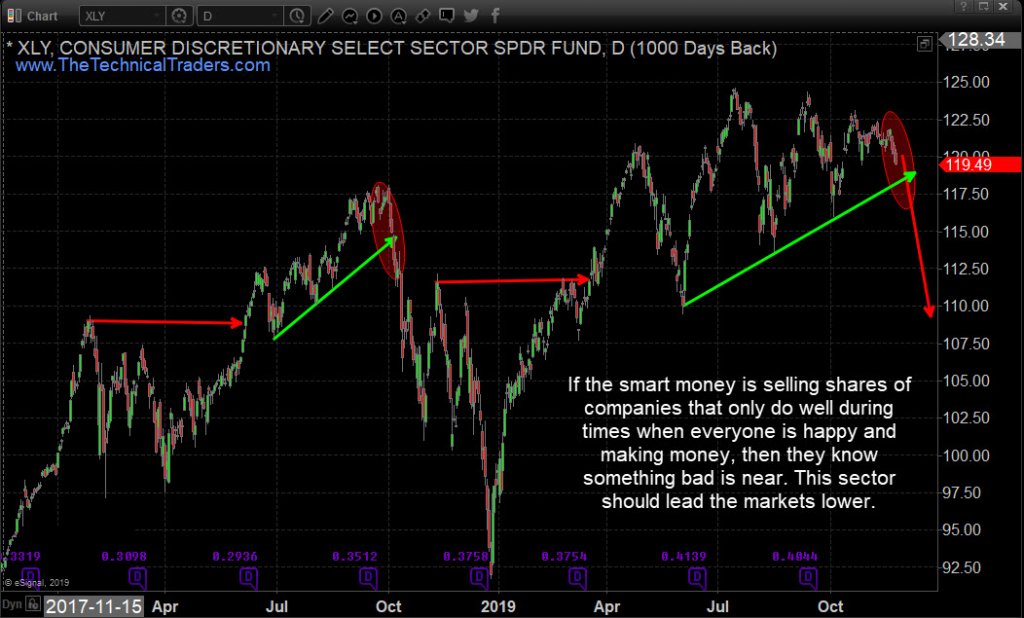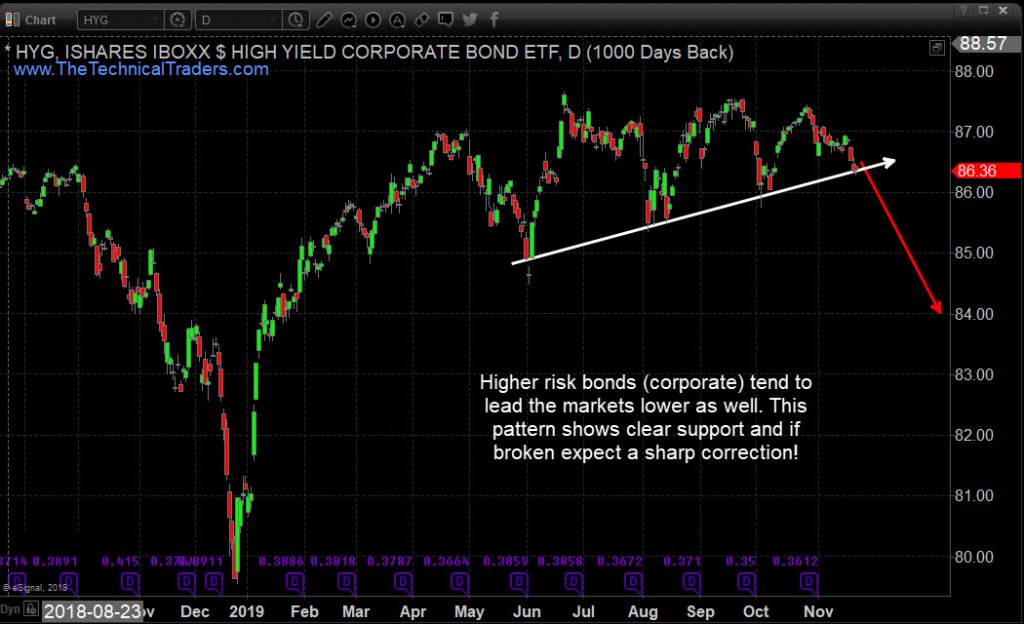I have been warning of a peak in the markets and a continued capital shift in the global economy that continued to push the NASDAQ and Dow towards new all-time highs while the foundations of the global markets continued to weaken.
I authored dozens of research posts regarding this phenomenon over the past 90+ days. Yet the clearest signs of this event may already be present in these Consumer Discretionary sector and Corporare Bonds charts.
Consumers drive economic activity and corporate debt is often a measure of sustainable debt function within a functioning economy. When consumers tighten their belts and exit the economy in some form and corporate debt is viewed as “more toxic” than “opportunistic”—something has changed in the global economy where a portion of the active consumer engagement of that economy is waning or has already left the building.
One of the biggest reasons economic contractions happen is because consumers exit the marketplace as a form of protectionism. Much like in 2008-09, when the credit crisis started hitting, many consumers were in shock and simply exited the marketplace completely. They didn’t buy big-ticket items. They didn’t go on trips. They didn’t do much of anything other than try to pay their bills and to protect what they had. I call this the “toilet paper and toothpaste mode.” Consumers typically buy only what is needed at times like this and try to save as much as they can.

Consumer Discretionary Sector – Daily Chart
If the Consumer Discretionary sector breaks below the $118 level and continues lower, it would be a very clear sign that the lower price channel has been broken and that new downward pricing pressures are taking place in the global markets. The bigger picture is that a breakdown in consumer confidence could take place – much like a self-fulfilling event. When the consumer market begins to tighten, more fragile consumers (those without extra money to spend) begin to tighten their spending and begin to default on loans/credit cards. As the event extends, more middle-ground consumers begin to change their tactics and risks become more evident to them. Each time a consumer sector moves into a protectionist mode, it pushes other areas of the economy into a crisis mode/contraction. Thus, the self-fulfilling process continues until a bottom is reached.
High Yield Corporate Bonds – Daily Chart
Corporate Bonds are another measure of economic engagement and debt function. A breakdown in Corporate Bonds would become a major debt risk factor for the consumer market and for the global stock market. As Corporate debt falls below the lower trend line level, consumers and lenders may begin to view Corporate Debt as more and riskier. This creates a type of panic is the consumer sector has already begun to move towards a protectionist mode.
Corporate Debt failures would represent a massive risk factor for the global economy because it would break the overall confidence within the markets and push consumers over the edge in terms of economic activity and engagement.
Remember near the end of 2018 when the market collapsed after the U.S. Fed raised rates in early October 2018. This type of breakdown was the same type of event. What changed was the U.S. Fed had to alter its longer-term stance in the markets and decrease rates in order for the markets to feel more comfortable. Now, 12 months later, after the Fed has lowered rates three times and softened forward expectations, what would a breakdown in consumer and corporate sectors really do to the markets? What would the Fed use to counter a price contraction and consumer panic?

Pay very close attention to both of these sectors going forward. We believe we are very close to the edge of a massive price breakdown event given our research. If these charts break lower and break through price support, the global markets could contract by at much as 15 to 22% over time—possibly further.
As a technical analysis and trader since 1997, I have been through a few bull/bear market cycles. I believe I have a good pulse on the market and timing key turning points for both short-term swing trading and long-term investment capital. The opportunities are massive/life-changing if handled properly.
